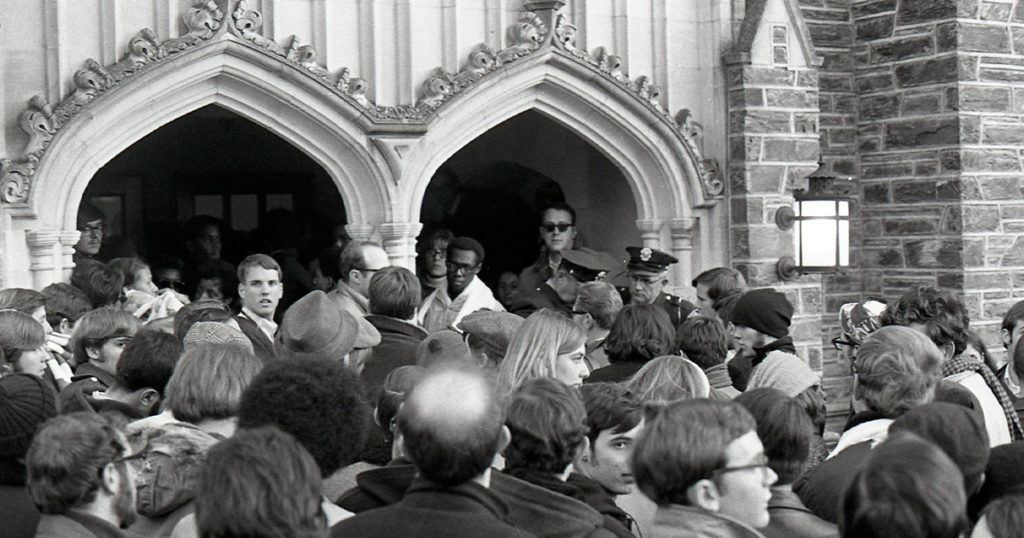Second-Class Students No More
An excerpt from Point of Reckoning: The Fight for Racial Justice at Duke University by Theodore D. Segal

As antiwar and civil rights protests swept through the country in the 1960s, college and university students often organized protests not only against worldwide injustices, but also against their schools’ administrations. One of the most contentious of these demonstrations took place in February 1969 at Duke University, where members of the school’s Afro-American Society barricaded themselves inside the administration building. The ensuing standoff between police and students ended in dozens of injuries. This was a moment years in the making, even though Black students had first been admitted to Duke only in 1963. In his new book, excerpted below, Theodore D. Segal shares stories of those students from half a century ago.
Called the “chosen few” by some members of Durham’s Black community, the Black students who came to Duke during the early years of desegregation shared a common background. Almost all were from the South. Born in the 1940s and early 1950s, these students had spent their childhoods in segregated communities. As Turner noted, the first Black students at Duke “grew up in an all-Black setting. . . . We came up in all-Black churches, all-Black schools, all-Black communities—all-Black everything,” he said. Growing up in this environment, family, school, and church helped determine one’s sense of self-worth and advancement. In rural Ayden, North Carolina, “the entire Black community was united,” law student Charles L. Becton recalled. “It was a family. People would always call your mother or your parents if you were not doing what you were supposed to be doing. The teachers would spank you and call your parents and you would get spanked again. People were looking out for each other because no one in the white community at that time . . . cared much about Black youth.”
The first Black students at Duke grew up in “protective Black communities,” Brenda E. Armstrong explained, “that had [an] incredible history [and people who] demonstrated by example the dignity that our ancestors had been able to call on to . . . convince themselves that they were real people and they were good people.” Armstrong learned that history from her father, Dr. Wiley “Army” Armstrong, a prominent Rocky Mount, North Carolina, physician and civic leader. Driving to the country to see patients, Dr. Armstrong would take his daughter along. Only three generations re- moved from emancipation, he taught his daughter during these long car rides about Black history in North Carolina and shared stories about the courage, resiliency, and faith of their family. He told “these stories with such passion,” Armstrong recalled. “Even though I was young, I never for- got them.” When she talked to her friends at Duke, Armstrong found that “they had the same experiences.” Almost all had learned about their ancestors and their people through powerful stories communicated by family members.
Copyright Duke University Press, 2021

